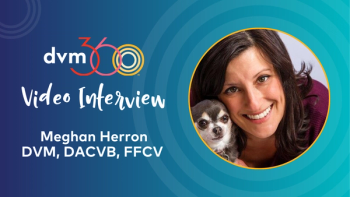
Compulsive disorder: a multi-species problem (Proceedings)
Compulsive behaviors seem abnormal because they are displayed out of context and are often repetitive, exaggerated or sustained.
Definition
- “…unvarying repetitive or constant behavior patterns that have no obvious goal or apparent function.”
- Landsberg et.al. 1996
- “Compulsive behaviors seem abnormal because they are displayed out of context and are often repetitive, exaggerated or sustained”.
- Hewson et.al. 1996
Categories of cds
- Oral
- Locomotory
- Hallucination
- Aggression
- Vocalization
Oral
- Excessive self licking
- Alopecia
- Acral lick dermatitis (acral lick granuloma)
- Flank sucking (Doberman Pinschers)
- Self mutilating (Large breeds)
- Air licking
- Licking objects
Locomotory
- Tail chasing (German Shepherd Dogs)
- Spinning (Bull Terriers)
- Shadow and light chasing
- Pacing
- Checking hind ends (Miniature Schnauzers)
Hallucinatory
- Staring
- Chasing imaginary prey
- Fly chasing (snapping)
- Aggression
- Aggressive to humans or objects
- Vocalization
- Prolonged monotonous barking
Compulsive Disorder in Cats
- Locomotion
- Freezing
- Dashing off
- Sudden agitation and skin ripple (feline hyperesthesia)
- Ducking
- Circling
Oral
- Wool sucking
- Chewing legs or feet
- Chewing or licking objects
- Pica
- Over grooming (feline psychogenic alopecia)
Aggression
- Self directed aggression (attacking its tail or leg)
“Hallucination”
- Avoiding imaginary objects
- Staring at “shadows”
- Startling
Cause of Compulsive Disorder
- Prolonged, repeated frustration and stress
Environmental causes
- Over stimulation
- Stressful stimulation
- Under stimulation
Physical lesions or irritations (allergy, surgery)
- Other behavioral problems
- Separation anxiety
Why did we name this condition “Compulsive Disorder” ?
- Because it looks like OCD in humans
- OCD=Obsessive Compulsive Disorder
- What is Obsessive Compulsive Disorder?
- Obsession: “...persistent idea, thoughts, impulses, or images that are experienced as intrusive and inappropriate and that cause marked anxiety or distress”.
- Compulsion: “...repetitive behaviors (e.g. hand washing, ordering, checking) or mental acts (e.g. praying, counting, repeating words silently) the goal of which is to prevent or reduce anxiety or distress, not to provide pleasure or gratification”. Diagnostic and Statistical Manual
- Do animals obsess? We do not know. Thus, we use the term compulsive disorder for animals.
Similarity in Characteristics
- Repetitive behaviors observed in human OCD and CD in animals
- Hand-washing vs. excessive licking
- Ritualistic behavior and repetitive behavior
Genetics of OCD and CD
- OCD can run in the family
- People who have first degree relatives with OCD have nearly 5 fold increase in life time prevalence of OCD
- Breed predisposition
- German shepherd :tail chasing
- Doberman : flank sucking
- Bull terrier : spinning
- Large breed dogs : acral lick dermatitis
Similarity in Pharmacological Response
- For human OCDs
- Tricyclic antidepressant (TCA)
- Clomipramine
Selective serotonin reuptake inhibitors (SSRI)
- Fluoxetine, Fluvoxamine, Sertraline, Paroxetine
Others for animals
- Opioid antagonists: effective for tail chasing
Pathophysiology of OCD
- Imaging techniques and pharmacological studies have been utilized to understand OCD
- Dopamine and repetitive behaviors
- High dose of dopamine will reliably induce stereotypic behavior in many animals
- Increased DA release is the characteristic arousal response of the mesoaccumbens system. Mesoaccumbens DA hyperactivity may promote stereotypies (repetitive behaviors)
- Serotonin and OCD
- 40 to 60% of OCD patients respond to SRI treatment Stereotypic voles had less 5-HIAA in caudate nucleus
SRI = serotonin reuptake inhibitor
- 5-HIAA= 5-hydroxyindole acetic acid (serotonin metabolite)/ 5-HT= serotonin
Serotonin and Dopamine Interaction
- 5-HT innervation of dopaminergic cell bodies and terminals regulate DA neuronal firing and DA release
Opioid system
- Naltrexone, Naloxone, Nalmefen reduced stereotypies in sows
- Effect mostly on mu opioid receptors
- Nalmefene suppressed cribbing in horses
Diagnosis
- There is no definitive diagnostic test
- Exclusion of medical causes
- Physical exam, CBC, serum chemistry, other special examinations
- Behavior history
- Observation of the behavior
- Conscious, aware of surroundings
- Usually able to interrupt
- No post-ictal phase
- Doesn't depend on owner's presence
Treatment
- Identify and remove cause of conflict and desensitize to stress inducing situation
- Reduce general stress in the environment
- Interact with pet in a predictable and calm fashion
- Provide consistent routine
- Avoid punishment as much as possible unless the punishment can meet the 3 rules of punishment (appropriate, consistent, immediate)
- Provide sufficient exercise and activity
Medication
- Clomipramine (TCA)
- Dog: 2 – 3 mg/kg twice a day
- Cat: 0.5 – 1 mg/kg once a day
- Fluoxetine (SSRI)
- Dog: 1 – 1.5 mg/kg once a day
- Cat: 0.5 – 1 mg/kg once a day
- Paroxetine (SSRI)-same as fluoxetine
- Sertraline (SSRI)-same as fluoxetine
Others: benzodiazepines
- Antipsychotics
- Opioid blocker
Pharmacology for CD
- All medications are extra label use.
- None are 100% effective
- SRI (serotonin reuptake inhibitors) will not show their effect for about 4 to 8 weeks
Treatment: behavior modification
- Desensitization and counter-conditioning
- Identify the stress and make it non-stressful
- When supervised, as soon as the animal performs the compulsive behavior, distract the behavior
- give a command that the animal knows
- reward with food for responding to a command
- Training with food reward
- Basic obedience training
- Teach fun tricks
- Structured game (hide and seek, etc)
- Clicker training
Treatment
-summary-
- Identify and remove cause of conflict and desensitize to stress inducing situation
- Reduce general stress in the environment
- Medication
- Behavior modification
Prognosis
- Owners are frustrated most of the time. It is important to have follow up calls and follow up visits frequently.
- Medication will reduce the frequency and the duration of the behavior but will not cure the animal. Inform the owner that behavior modification is important
- If there is no improvement 4 to 6 weeks after starting the treatment, changing or giving additional medication may be recommended
If there is no improvement
- Ask how much they have been trying behavior modification, training and management
- Increase the dose of current medication
- Change medication
- Clomipramine → Fluoxetine
- Add medicine to the current SRIs
- Benzodiazepine
- Buspirone (BuSpar)
TCA + SSRI in low dose
Newsletter
From exam room tips to practice management insights, get trusted veterinary news delivered straight to your inbox—subscribe to dvm360.






